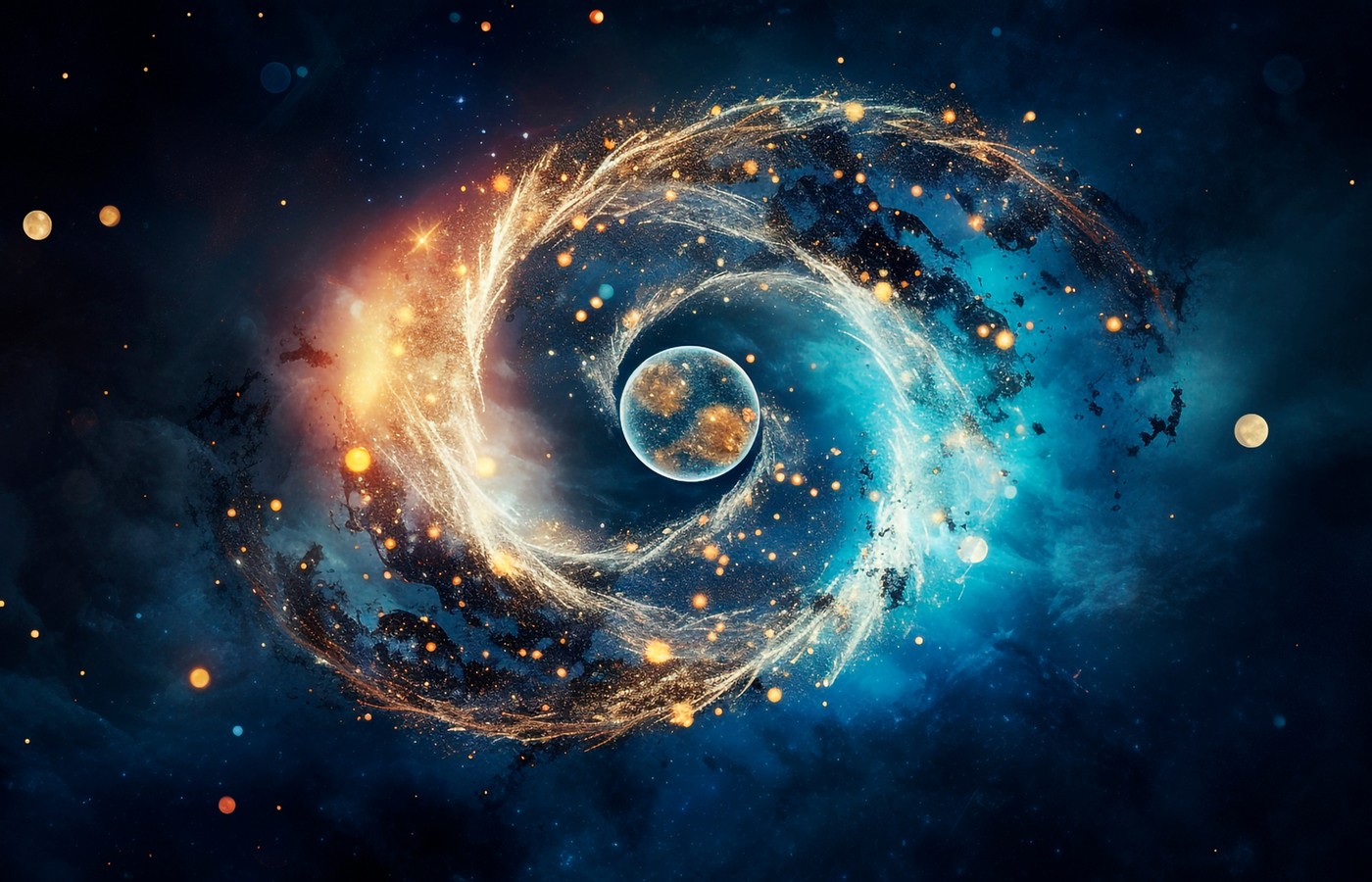Whether you accept it, avoid it or live somewhere in between, insurance coverage has become a defining issue for our profession. Patients increasingly expect to use their benefits, practitioners want to be compensated fairly for their time and expertise, and the system itself remains – at best – fragmented. The encouraging news is that coverage has expanded in meaningful ways. The challenging news is that reimbursement, across the board, remains inadequate.
Taoist Cosmology and the Eight Extraordinary Channel Pairings
This is the second and final article in this series on the Eight Extraordinary Channels and Taoist cosmology.
Traditional Chinese medicine primarily is based on systems of correspondences, which reveal the relationships between the universe and the human body. Bridging the relationship between macrocosms and microcosms are classic Taoist cosmological diagrams, including the He Tu and Luo Shu. Each diagram has profound applications in the theory and clinical practice of Chinese medicine, including the classic pairings of the Eight Extraordinary Channels.
He Tu Diagram
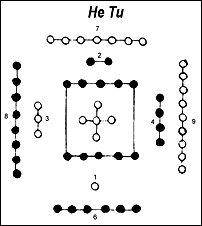
Legend holds that Fu Xi found the He Tu diagram in the Xia dynasty. It is a profound diagram, with many applications in Taoist arts. This Taoist cosmological model contains energetic pairings that can be used to identify relationships in the practice of acupuncture. From an Eight Extraordinary Channel perspective, the He Tu provides the theory for "coupled pairs."
In the He Tu, the top south is Fire and 2/7; the west (to the right) is 4/9 and Metal; the bottom is Water-north and 1/6; and the east-Wood is 3/8 and to the left. Each cardinal direction contains two numbers - one yang, one yin, reflecting yin-yang in each direction.
In the center are five dots. Five represents the center, core, yuan or primordial; number patterns in each direction are multiples of five, which is the Earth element. This diagram reveals that all elements, numbers and directions originate from the center or earth. He Tu combinations relate to the number five (6-1=5; 9-4=5; 8-3=5; and 7-2=5).
He Tu Pairs
- 1-6 combine to create Water
- 3-8 combine to create Wood
- 2-7 combine to create Fire
- 4-9 combine to create Metal
These directions and their He Tu correspondences are the basis for the Eight Extraordinary Channel coupled pairs.
The He Tu is a Taoist model, which contains traditional Chinese medical theories of the systems of correspondences. Parts of the human body are grouped into pairs. For instance, zang-fu, ankle-wrist, elbow-knee and shoulder-hip are "coupled pairings," and have significant clinical applications.
Luo Shu
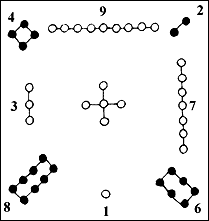
The following diagram is the Luo Shu or "Nine Palaces," and was introduced in the first part of this series. The Luo Shu presents an energetic sequence or pattern. In a previous article on the meridian clock, the Luo Shu provided the energetic pattern for creating the order of the clock. The Eight Extraordinary Channels will be placed in this profound energy formation and paired according to the He Tu. The pairings based on the He Tu reveal the classic pairings of the Eight Extraordinary Channels presented by the legendary Xu Feng in the Ming dynasty. The essence of these relationships is that they are based on He Tu (coupled pairs) correspondences.
Eight Extraordinary Channel Pairings
He Tu, Luo Shu and the Early and Later Heaven ba gua comprise integral energy formations used in the eight branches of Tao. They also comprise tools and theories used to support the classic pairings of the Eight Extraordinary Channels and their opening/confluent points. The classic pairings passed down by Xu Feng are the chong and yin wei channels; du and yang qiao channels; ren and yin qiao channels; and dai and yang wei channels.
Chong Mai
The chong mai is referred to as the sea of blood, sea of arteries and veins, sea of 12 primary channels, sea of yuan qi, primordial channel, ancestral channel, blueprint of life and thorough way channel.
Du Mai
The du mai is referred to as the sea of yang, governor and supervisor.
Ren Mai
The ren mai is referred to as the sea of yin, conception and directing channel.
Dai Mai
The dai mai is referred to as the girdle, belt, holding and binding channel, as well as the sea of ming men.
Yin Wei
The yin wei is referred to as the yin linking channel.
Yang Qiao
The yang qiao is referred to as the yang heel, accelerator of yang and yang walker vessel.
Yin Qiao
The yin qiao is referred to as the yin heel, accelerator heel and yin walker.
Yang Wei
The yang wei is referred to as the yang linking channel, preserver of yang and vessel of yang keeper.
Eight Extraordinary Channel Pairings Theory
This theory begins by sequencing the evolution of the Eight Extraordinary Channels as an energy network; it's their energetic unfolding. In a similar way in Taoist cosmology and I Ching theory, Wu Ji births Yin-Yang, which produces the Four Forces, which birth the Eight Trigrams. (For more information, see the author's articles on I Ching acupuncture.)
Four Seas (Four Core Channels)
- Chong Mai - yuan channel, sea of 12 primary meridians, primordial channel
- Du Mai - sea of yang, initiator of yin-yang dynamic
- Ren Mai - sea of yin, activated when yang initiates
- Dai Mai - binding channel, holds energy of the channels
Four Transporters (Transports and Assists the Core Channels)
- Yin Wei Mai - most yin of the four transporters
- Yang Qiao - most yang of the four transporters
- Yin Qiao - second-most yin
- Yang Wei - second-most yang
Note that the pattern flows from yin-yang.
- Chong is the center and represents wu ji.
- Du is most yang.
- Ren is most yin.
- Dai is second-most yang.
- Yin wei is second-most yin (Pericardium 6 is jue yin).
- Yang qiao is third-most yang (Bladder 62 is yang qiao).
- Yin qiao is third-most yin (Kidney 6 is yin qiao).
- Yang wei is fourth-most yang (San Jiao is shao yang).
Below is a hexagram from the I Ching and the corresponding positions of the Eight Extraordinary Channels.

This pattern is integrated into the classic Luo Shu and He Tu.
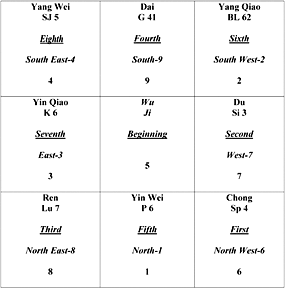
In this theory, place the Eight Extraordinary Channels into the Luo Shu. The pattern begins in the center palace with the number 5, then northwest (6), west (7), northeast (8), south (9), north (1), southwest (2), east (3) and southwest (4). Place the Eight Extraordinary Channels into the Luo Shu in the exact sequence listed above.
Follow the order of first, second, third, fourth, fifth, sixth, seventh and eighth.
Method
Place the Eight Extraordinary Channels in the Luo Shu and use the Luo Shu sequence.
- The center (5) is the origin of the Luo Shu and all channels; it is empty.
- Chong Mai is placed in the northwest (6).
- Du Mai is placed in the west (7).
- Ren Mai is placed in the northeast (8).
- Dai Mai is placed in the south (9).
- Yin Wei is placed in the north (1).
- Yang Qiao is placed in the southwest (2).
- Yin Qiao is placed in the east (3).
- Yang Wei is placed in the southeast (4).
Once the Eight Extraordinary Channels are placed in the Luo Shu based on the sequence listed, they are paired according to the He Tu pairs. Note the He Tu partners form the classic coupled pairings of the Eight Extraordinary Channels.
He Tu pairings reveal the Eight Extraordinary Channel pairings:
- 1/6, north and northwest: P 6 and Sp 4
- 3/8, northeast and east: Lu 7 and K 6
- 4/9, southeast and south: SJ 5 and GB 41
- 2/7, southwest and West: BL 62 and SI 3
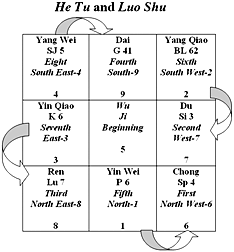
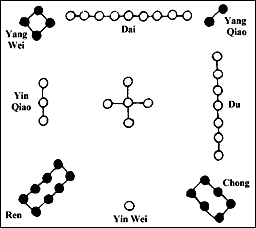
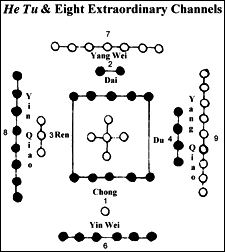
Classic Pairings and He Tu
- 1-6 is Chong Mai and Yin Wei
- 3-8 is Ren Mai and Yin Qiao Mai
- 4-9 is Yang Wei and Dai Mai
- 2-7 is Yang Qiao and Du Mai
Training in all branches of the Tao arts was common for legendary doctors of Chinese medicine, providing theory to support many principles and applications in Chinese medicine. Training in Taoist alchemy, qi gong, feng shui, the Chinese calendar, Chinese astrology, I Ching and acupuncture are guides to realizing the classic Eight Extraordinary Channel pairings are based on the Luo Shu and He Tu. These two Taoist cosmological models are integral systems of correspondences, revealing relationships between the Eight Extraordinary Channels and their applications in clinical practice.
Xu Feng was a master of acupuncture in the Ming dynasty and contributed to popularizing systems of correspondences, including the Eight Extraordinary Channel pairings and the time-based systems Ling Gui Ba Fa and Zi Wu Liu Zhu. These methods are sophisticated acupuncture applications that integrate macrocosms and microcosms. Their principles are found in the classic Chinese medical text, the Nei Jing, a profound book of cosmology.
